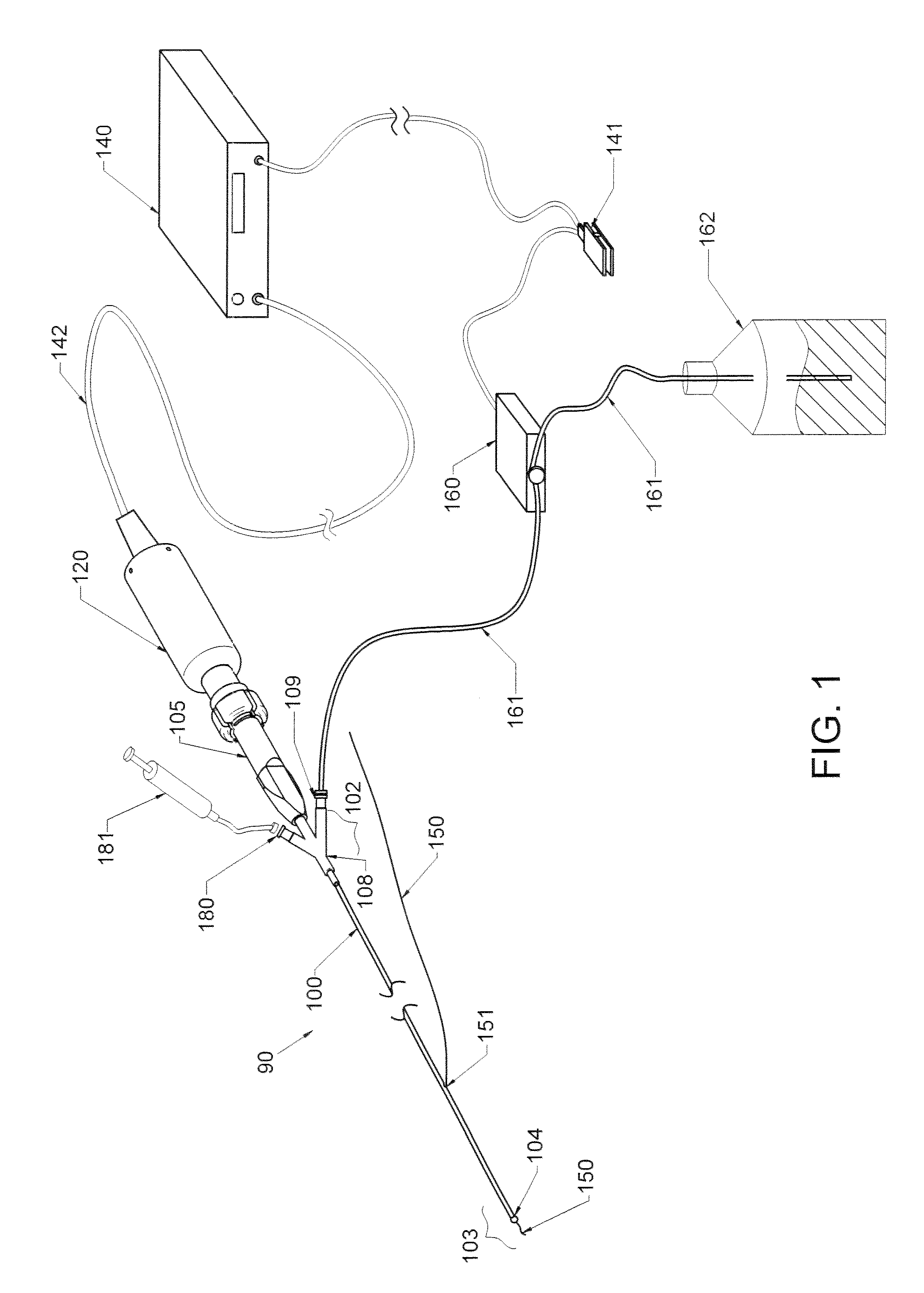Methods and devices for endovascular therapy
a technology of endovascular therapy and endovascular valve, which is applied in the field of medical devices and methods, can solve the problems of limited long-term effectiveness of angioplasty and stent implantation, unsatisfactory methods and devices for delivering anti-stenotic therapy to blood vessel wall tissue, and far from solving restnosis problems, so as to reduce stenosis, inhibit restnosis, and increase vessel permeability.
- Summary
- Abstract
- Description
- Claims
- Application Information
AI Technical Summary
Benefits of technology
Problems solved by technology
Method used
Image
Examples
Embodiment Construction
[0081]The present application provides new methods and devices to improve the treatment of vascular stenosis and re-stenosis using ultrasound technology to enhance delivery of therapeutic agents directly to a targeted therapeutic site, such as a stenotic site on an artery or vein wall. These methods may be understood as forms of anti-stenosis treatment, which may include treatment of a stenotic site to modify plaque compliance and to increase the patency of the afflicted vessel, or it may also include treatment of a site previously treated or contemporaneously treated to inhibit or prevent restenosis. Aspects of the invention, including devices and the types of therapeutic agents whose efficacy may be enhanced by the provided technology will be described first in general terms, and then, further below, will be described in the context of FIGS. 1-16.
[0082]The methods described herein employ endovascular sonophoresis and induce vasodilatation, a process that creates micro-indentations...
PUM
 Login to View More
Login to View More Abstract
Description
Claims
Application Information
 Login to View More
Login to View More - R&D
- Intellectual Property
- Life Sciences
- Materials
- Tech Scout
- Unparalleled Data Quality
- Higher Quality Content
- 60% Fewer Hallucinations
Browse by: Latest US Patents, China's latest patents, Technical Efficacy Thesaurus, Application Domain, Technology Topic, Popular Technical Reports.
© 2025 PatSnap. All rights reserved.Legal|Privacy policy|Modern Slavery Act Transparency Statement|Sitemap|About US| Contact US: help@patsnap.com



